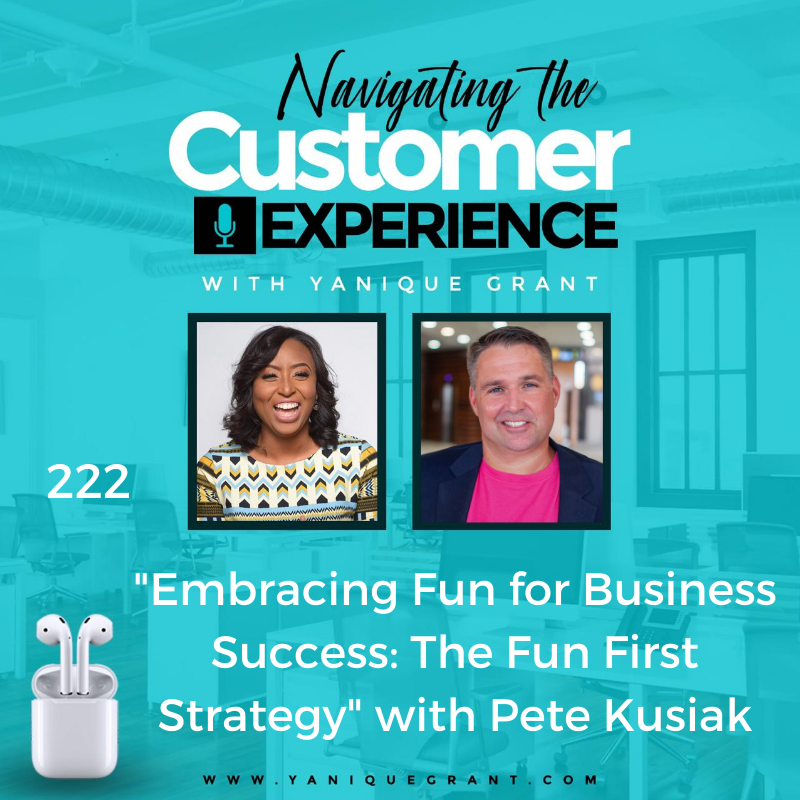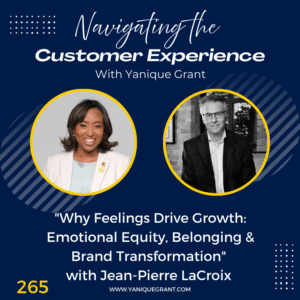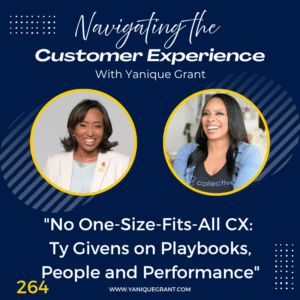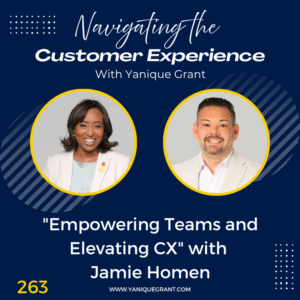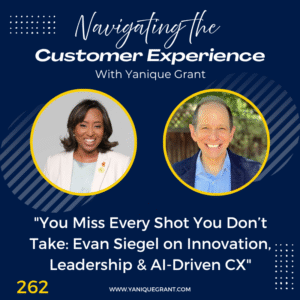Pete Kusiak is the franchise guru who knows how to bring the fun into business. With a track record of success owning and coaching franchises for over 20 years, Pete’s innovative strategies have transformed businesses, boosting revenue and workplace happiness. His passion lies in creating organisations that are not only exciting, but also irresistible. By using his Fun First Strategy, Pete motivates teams, improves company culture, and drive sales and operations to new heights.
When he’s not busy making work lively, you can find Pete enjoying quality time with his amazing wife and four kids in Charlotte, North Carolina. Oh, and did I forget to mention he’s a seasoned marathon runner and a connoisseur of Rum Punch and Mai Tais! Pete has certification in Happiness Coaching and Human Resources Consulting, making him your go-to-guy for all things fun and business.
Questions
· Now, we always like to give our guests an opportunity for them to share in their own words, a little bit about your journey. How did you get to connecting fun with business? How did that all come about?
· So, can you tell our listeners a little bit about your book, Drop the F-Bomb in Your Business and maybe two to three overarching themes that the book focuses on, just like what can they expect from the book?
· Are there any recommendations you could give to our listeners, like if they wanted to make fun part of their culture, what are some things like from a recruitment perspective you would need to kind of identify in the interview process to kind of pick those persons or at least be able to identify that those persons may have those qualities?
· Could you share with our listeners what’s the one online resource, tool, website or app that you absolutely cannot live without in your business?
· Can you also share with our listeners maybe one or two books that you’ve read, it could be a book that you read recently, or even one that you read a very long time ago, but it has had a great impact on you.
· Now, could you also share with our listeners, what’s the one thing that’s going on in your life right now that you’re really excited about? Either something you’re working on to develop yourself or your people.
· Where can listeners find you online?
· Now, before we wrap our episodes up, we always like to ask our guests, do you have a quote or a saying that during times of adversity or challenge you will tend to revert to this quote if for any reason you get derailed or you get off track, the quote kind of helps to get you back on track.
Highlights
Pete’s Journey
Me: Now, we always like to give our guests Pete an opportunity for them to share in their own words, a little bit about your journey. How did you get to connecting fun with business? How did that all come about? Can you tell us?
Pete shared that his journey really started way back when he graduated college. And he linked up with a franchise, children’s fitness franchise called The Little Gym and it is all about creating these great fun experiences with kids and teaching them how to enjoy being physically active. So, that really carried with him as he progressed through his years in corporate America, because he had eventually made a name for himself and got linked up with the corporate headquarters of that franchise, did some training and consulting, to eventually owning his own Little Gyms in the Charlotte market.
So, once they built a successful franchise platform in Charlotte, it was time for him to kind of step back from the day to day operations and got more involved in the coaching consulting realm with different brands, mainly in the service industry, but helped build operations, and trainings and coaching and all sorts of good things over the last few years that ultimately led him to sit back and really reflect about why businesses are successful?
Why were his businesses successful?
What was the commonalities between the businesses that didn’t have success versus the ones that did?
And it came down to one thing, it was really easy, the businesses that had the most fun, were the most successful, and he felt that in my businesses, the days or months or years that they were focused on that grind, they were in that mentality of a grind, they weren’t as successful as the years they were just enjoying what they were doing and celebrating with their customers, and just creating a culture that was really good. So, the mindset really made a big difference.
So, what he did was he decided, “Hey, if I could put all of these unique theories and these unique methods into a book, it would really make a great business strategy.” So, a couple years ago, he started writing, and came up with what he called the Fun First Strategy, it’s really a way to prioritize making fun, the element in which or the catalyst in which you can have business success. So, kind of a long story there. But it’s a wide range from his early beginnings of a teacher and working with kids all the way through working with multiple brands and coaching and consulting, but using those strategies to really propel fun as a catalyst.
Pete’s Book – Drop the F-Bomb in Your Business
Me: So, then you wrote a book called Drop the F-Bomb in Your Business: With The Fun First Strategy. F of course, standing for fun. So, that book was published on January 23 of 2024, correct?
Pete said yes, he was having fun with a wordplay there. Drop the F bomb and what’s so neat is that coming from the children’s fitness industry, they didn’t use foul language, you’re working with kids, you don’t do that. So, he thought it would kind of be unique to position it as an eye catcher and you get people curious about what he’s talking about. So, having a little fun with words.
Me: It was, I will have you know that when your profile was presented to me via email, that’s what caught my attention in the email. So, I was like drop the F bomb. I said, I wonder what he’s talking about. And then I did some more research. And I was like, Oh, this sounds pretty interesting. I’d love to have him on our podcast as a guest. So, can you tell our listeners a little bit about your book, and maybe two to three overarching themes that the book focuses on, just like what can they expect from the book? Is it more like narratives in terms of examples of using fun in different businesses and you give like case studies and examples, or is it more so you talking more from a strategy perspective of using fun as that trigger that will help to navigate that experience
Pete shared that it’s really all of the above, because they have to prove that there’s a need for fun in business, because a lot of times when you throw that out there, so you need to have more fun in order to be successful in business, people not necessarily agree, everyone for the most part understands that it’s important to celebrate the victories, have fun when you win, achieve goals. But his book is really about how you make fun part of the journey, not just the reward, that’s a key element. But you really need to know and flip that mindset to, “If we could have fun along the way. If we could build that into our operations, if we could build that into our business environment, our customer service. If we could attract more like minded individuals that want to have fun, and be part of that process, what would that do for your business?”
So, the book really starts with changing the mindset and can convincing through the philosophy that fun does work, it can create opportunities for more, better problem solving, better creative thought, more work engagement, which is ultimately going to lead to higher profits, better customer service, etc. So, they kind of start there. And then as the book progresses, it takes you through what he calls the playbook.
The playbook, or the PLAY book is really important because that’s the actual strategy sets, that’s one of his theories is called The Principle of PLAY and that stands for Prioritize, Laughter and Youth, so when you can find a commonality amongst your people, your team, your culture, your business culture, you can start to employ these play principles so that you’re having more unique experiences and getting to those points where everything else is a lot easier, because you’re having fun along the way. And so then, toward the end of the book, they talk about the strategies in experiences. So, he actually have written some real life examples of how the first strategy actually worked in different businesses. So, those will be fun to read as well.
Me: All right, that is awesome. So, PLAY you said stands for Prioritize, Laughter and Youth.
Pete stated that’s right. So, if you make fun, obviously, the Fun First Strategy, right, prioritize, make it a priority in your business, to make fun part of your culture. And if you can make it number one, great. But laughter, who doesn’t want to laugh when you have to work? So, they do that through gameplay in creating opportunities to be a little silly, and youth, youth comes in because he likes to say, consider the things you did as a child, what did you like to do? What games did you play? What activities did you enjoy? Because it’s fun to revisit, it’s fun to revisit and think about this as you’re a child, you’re taught through play, you’re taught through music, you’re taught through song or games and activities. But as we get older, at least here, the education he received was that they had less and less play, they had less and less singing and things like that.
But why? If we’re hardwired to do that, if we’re doing that from the beginning, what a neat thing that could potentially shape you as an adult as well if you are hardwired to play and be active and want to take that moment of joy, it’s going to change your mindset and everything that you do, right. So, it was important for him that they addressed the grind culture, what he calls the grind culture, and the negativity that happens when you get into a grind culture.
So, this book really helps you to one, recognize if you’re in that culture, but two, the real, true strategy on how to get out of that. Ultimately, his goal was to create more workplace happiness, the goal in the Fun First Strategy is to create environments that are very engaging and fun and create workplace happiness.
Me: Amazing, when I opened your bio this morning to prepare for the podcast interview, I had to do a TV interview this morning, I was helping out a friend who has a business that focuses on indoor playground experience [YG1] . So, it’s targeted towards children but because we live in a tropical country and a lot of times when you take the kids outside, you’re so exhausted from the heat and sun, she decided that she was going to create this indoor playground experience with like, soft play and sensory activities, and ball pits and live characters like the ones you see in TV shows, so you have them right there dressed up in front of the kids. And we did a game with the hosts where they had two baskets and two sets of balls, one red, one green and each person had a balloon.
And the aim was to get as many of your colour balls into the basket without the balloon falling on the ground. But it was so much fun, they had so much fun. Like I was watching the video after I left the TV studio this morning and I was like, they had so much fun, they were like literally back as kids again. And I always say it. I mean, I believe that as adults, we are really big kids, but I find that we get so serious sometimes we take ourselves too seriously, we don’t take time to do fun and exciting things that make us laugh, because I do believe that those are things that help to keep you youthful.
Pete agreed, absolutely. And just think about how that made you feel, right. And that’s the principle of play at work, when you can put some silliness into your day, going to be a better problem solver, you’re going to be more creative and finding your solutions. Because you’re just thinking in that manner, thinking in a playful, creative way. Now, not to say that business is all fun, and not work because he believes that you do have to take business seriously and things that you have to do and reaching goals and measuring your business and all the things that make you financially successful, that’s important.
But if there was a way to make it more fun, if there was a way to get to those goals that are less stressful, or are less of a grind, you would probably do it. So, that’s what this is all about, it’s about making sure that you’re allowing yourself the opportunities to have some fun at work, because you’re going to open the doors to like-minded individuals, people that want to come work for you, customers that want to do business with you because the experience is wonderful. Think about the amount of hours we spent working days, we don’t want to be caught up in a lifestyle that just is beaten up. He wants to have more life experience.
Now the key really to this is the common interest, because what’s fun for one person may not be fun for the next and in the book he wrote about that, that there are diverse perspectives on fun. And through the strategy and through the book, you can kind of find common interest in there through icebreaker games and different things that you can do at work to find common interest amongst your team, or even with your customers. And then you kind of start to theme things and make things more enjoyable because he likes to run, Yanique had mentioned in his bio that he’s a marathon runner, but that’s not fun for everybody. But for him, it’s a good opportunity for him to express, move his body, express himself and all the good things that come along with running and staying healthy, to him it was fun. He likes to challenge himself but for the next person it may not be so you have to find those common interests and then build upon those interests as you find them.
And then one really big caveat is you have to remember the rule of grandma, so, the rule of grandma means if you wouldn’t do it in front of your grandmother, you shouldn’t do it at work because he’s heard some interesting stories when it comes to fun at work, we don’t want to any HR nightmares. So, if you wouldn’t do it in front of grandma, don’t do it at all.
Me: As you were talking about loving running, and just being able to express yourself, I’m going to tell you a little secret that unfortunately all of my listeners are going to hear now, but I love to dance, right, now, I’m not a good dancer according to some people who dance really well and see me dance, right? But I believe everybody can dance and everybody can sing. I just believe that maybe they’re not doing it to the level or at the capacity or competence that Whitney Houston, or Celine Dion can sing, or Shakira can dance, but I believe I can dance. But I feel so good when I dance, even if it’s foolishness I’m doing Pete, it feels good.
Pete stated that that is awesome. And he’ll tell you that two things come to mind. One is he spent time in Jamaica when they get the chance to vacation and stuff with his family, they absolutely love the culture, because it is full of life and dancing and movement, joy and singing. And he just loves to be around that type of environment, but he doesn’t dance. And what’s funny is even in his book he wrote about that as a concept, is that t’s okay to enjoy things even if you’re not participating.
So, don’t always judge a book by its cover when you’re creating games or activities or experiences that involve fun at work. If somebody’s just kind of standing by watching, don’t jump to the assumption that they’re not having fun because if you were to kind of outside looking in at him watching a group of people dance, you’ll say, “Well, how come he is not dancing, he must not be having any fun” but he’s having the time of his life just enjoying you expressing your love for dance, that’s a great time, it’s a lot of fun for him to be in part of that environment but he’s just not going to dance.
How to Select the Right Candidates for a Company with a FUN Culture?
Me: I get it. So, I have a question for you. The aim is to ensure that you have a fun culture, right? How do you attract people who like to have fun? Are there any recommendations you could give to our listeners, like if they wanted to make fun part of their culture, what are some things like from a recruitment perspective you would need to kind of identify in the interview process to kind of pick those persons or at least be able to identify that those persons may have those qualities?
Pete shared that it’s kind of a lot goes into that because one, once you’ve established that you’re a fun culture, it’s one thing to write that on a job ad and he thinks that there’s a lot of job ads that he’s read recently that promote a fun culture. But again, there’s diverse perspectives of fun and if it’s a core value in your business, or you’re promoting a fun culture, you need to live up to the hype, because he’ll tell you, when somebody is bought into your job ad, because you wrote about the fun, talked about that as a core value, and then they show up for an interview or they’re ready to start their work and they don’t see that culture in play, they’re not going to stay or they’re not going to show up again for another interview.
So, he thinks that you have to kind have to one, establish the fact that you are going to commit to this type of a culture and you’re going to live it, you’re going to be an embodiment. And what that fun version is for you, as the leader of the organization, the owner of the organization, the managers of the organization, whatever that model of fun is, it’s okay for you to own it, because you’re going to have people that may be aligned with your version of fun and there may be some people that don’t. So, when you write job ads and you promote the job that you’re ready to hire, you want to give very specific reasons of what you’re doing to provide that fun culture.
So, if you like to do a lot of outings or if you’d like to do a lot of silly themes during your week, there was one company he worked with, they love everything and any cats. So, they talked about, “Hey, we have a silly, fun culture at our business.” And they would talk about this in interviews because we are qyuirky they love everything cat, if you’re a cat person, reach out because you’ll fit right in. Now again, if he doesn’t like cats, okay, but if he thinks that that’s an interesting culture for him to want to be a part of, he can maybe align with that. So, he likes to say, one, establish what fun is for you. Give examples of that in your job ads. But embrace the uniqueness, embrace the uniqueness.
One of the biggest mistakes, especially small business owners make is they don’t embrace the charm of small business, there’s a uniqueness and a charm in small business that you can do things a little bit outside of work. And when people are interviewing, or people are applying for jobs, what they’ll do is they’ll apply for a lot of different reasons based on the title or the qualifications, things like that. So, as a hiring manager, he’s competing with small business, medium business, large business, corporations and he doesn’t want his interview, he doesn’t want to his job ads, he doesn’t want those things to be exactly like everybody else. And too many times he sees small businesses, especially write their job ads, and shake them like a large corporation and that’s okay until the individual comes in to see the environment they’re working, oh, well, this isn’t the 10 story building they interviewed in last week. Instead, embrace what makes you different, embrace that small charm, because he thinks you’re going to attract people that are looking for that type of opportunity, or they know what it is going into. Does that make sense?
Me: Yep, it does, perfect sense.
App, Website or Tool that Pete Absolutely Can’t Live Without in His Business
When asked about an online resource that he cannot live without in his business, Pete stated that in his business, he loves QuickBooks. So, he can’t live without QuickBooks, that’s how he does all his bookkeeping, all his invoicing and all his administrative. So, QuickBooks is a great online resource for them.
Books that Have Had the Biggest Impact on Pete
When asked about books that have had a great impact, Pete shared that he’s been thinking about this a lot, because he’s read a lot of business books. And one of the reasons he was so interested in writing a business strategy book was because he’s had so many that were multiple steps, or the 50 laws or 100 steps to whatever and they’re long and they’re cumbersome. So, his book is a little bit more about keeping it short. There is a book though that he read a few years ago it’s called David and Goliath: Underdogs, Misfits, and the Art of Battling Giants, it’s by Malcolm Gladwell. And he thought he was picking up a spiritual book at first, spiritual books and different things as a man of faith, but he thought it was picking a spiritual book and it was to a degree, but it was about all these stories and all these examples of how the underdog isn’t always necessarily the underdog, but we perceive the smaller, or the weaker, or whatever, as disadvantaged, sort of like David and Goliath.
But why is it that the underdog always excels? It’s because sometimes what’s perceived as a disadvantage, could actually be an advantage. And it was so compelling to him and the stories were so compelling that it really made him think about how he was raised, and some things because he wasn’t raised very wealthy and things like that, and how he had to problem solve his way to get to things, whether it be to sporting events or practices, different things, and if he wanted new shoes, or different whatever, he had to problem solve that as a young child.
And so, as he became a business owner, a business person later on down the road, he started remembered, “Hey, I can figure out pretty much any problem that comes my way because I practice those skills so early on”and growing up, he thought it was a huge disadvantage, he didn’t have the things his friends had, they didn’t have as much money, but he used those skills every day of his life now. So, that book is a great example of perceived ideas on disadvantages, they actually may be the things that are strengthening. So, it was a really neat perspective.
What Pete is Really Excited About Now!
When asked about something he’s excited about, Pete shared like he said, the book is out so he’s just celebrating his work, he call it his life’s work, his big strategy. It’s really taking up a lot of his time and he loves it, he loves being able to spread the word about adding fun into work and creating workplace happiness. He thinks it’s a movement for sure and he loves being on the kind of the precipice of this new business ideology that if we can add more fun, engaging experiences we can create workplace happiness for everybody. So, he loves being a part of that, so, that’s huge for him. So, spreading the word.
Where Can We Find Pete Online
Website – www.funfirststrategy.com
Quote or Saying that During Times of Adversity Pete Uses
When asked about a quote or saying that he tends to revert to, Pete shared that being a marathon runner, or being somebody that runs, his mantra ever has always been, “Never, never give up.” So, that echoes in his mind a lot as he start a new venture, start a run, especially a long run that he doesn’t know if has the energy, just keep moving, keep moving, “And remember to have fun.”
Me: All right, perfect. So, never, never give up. And always remember to have fun. I had fun in this interview.
Pete shared he did as well, he couldn’t pass up the chance to chat with somebody from Jamaica. So, love it.
Me: Warm my heart, warm my heart. Thank you so much, Pete, we really appreciate you taking time out of your busy schedule. I know you’re busy promoting the book and spreading the message. So, taking a good 30 minutes out of your day to sit with us and share all these great insights and nuggets about what you’re doing and just how it can help to improve and increase on workplace happiness and just human happiness, to make people just enjoy life more and not take themselves so seriously. But all while getting the job done and achieving the goals that we’re all working towards, it was really a fun and productive conversation. Thank you so much.
Please connect with us on Twitter @navigatingcx and also join our Private Facebook Community – Navigating the Customer Experience and listen to our FB Lives weekly with a new guest
Links
• Drop the F-Bomb in Your Business: With The Fun First Strategy by Pete Kusiak
• David and Goliath: Underdogs, Misfits, and the Art of Battling Giants by Malcolm Gladwell
The ABC’s of a Fantastic Customer Experience
Grab the Freebie on Our Website – TOP 10 Online Business Resources for Small Business Owners
Do you want to pivot your online customer experience and build loyalty – get a copy of “The ABC’s of a Fantastic Customer Experience.”
The ABC’s of a Fantastic Customer Experience provides 26 easy to follow steps and techniques that helps your business to achieve success and build brand loyalty.
This Guide to Limitless, Happy and Loyal Customers will help you to strengthen your service delivery, enhance your knowledge and appreciation of the customer experience and provide tips and practical strategies that you can start implementing immediately!
This book will develop your customer service skills and sharpen your attention to detail when serving others.
Master your customer experience and develop those knock your socks off techniques that will lead to lifetime customers. Your customers will only want to work with your business and it will be your brand differentiator. It will lead to recruiters to seek you out by providing practical examples on how to deliver a winning customer service experience!

